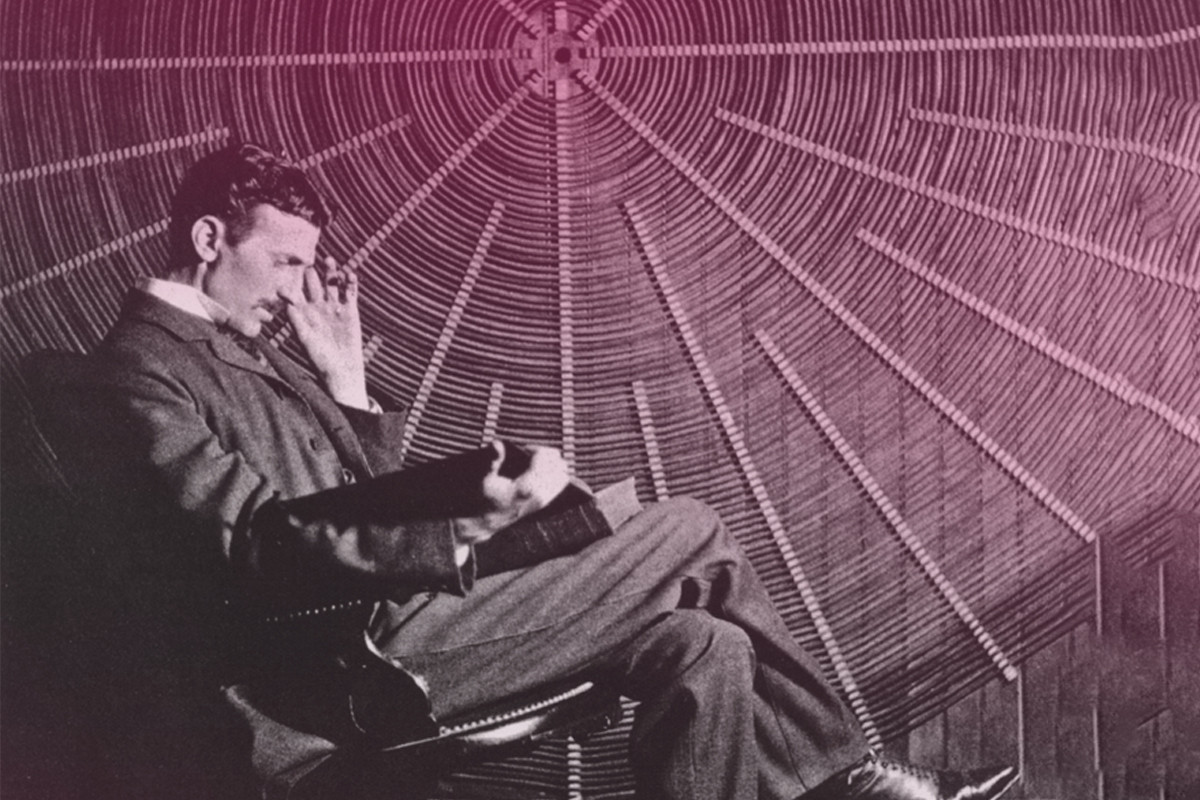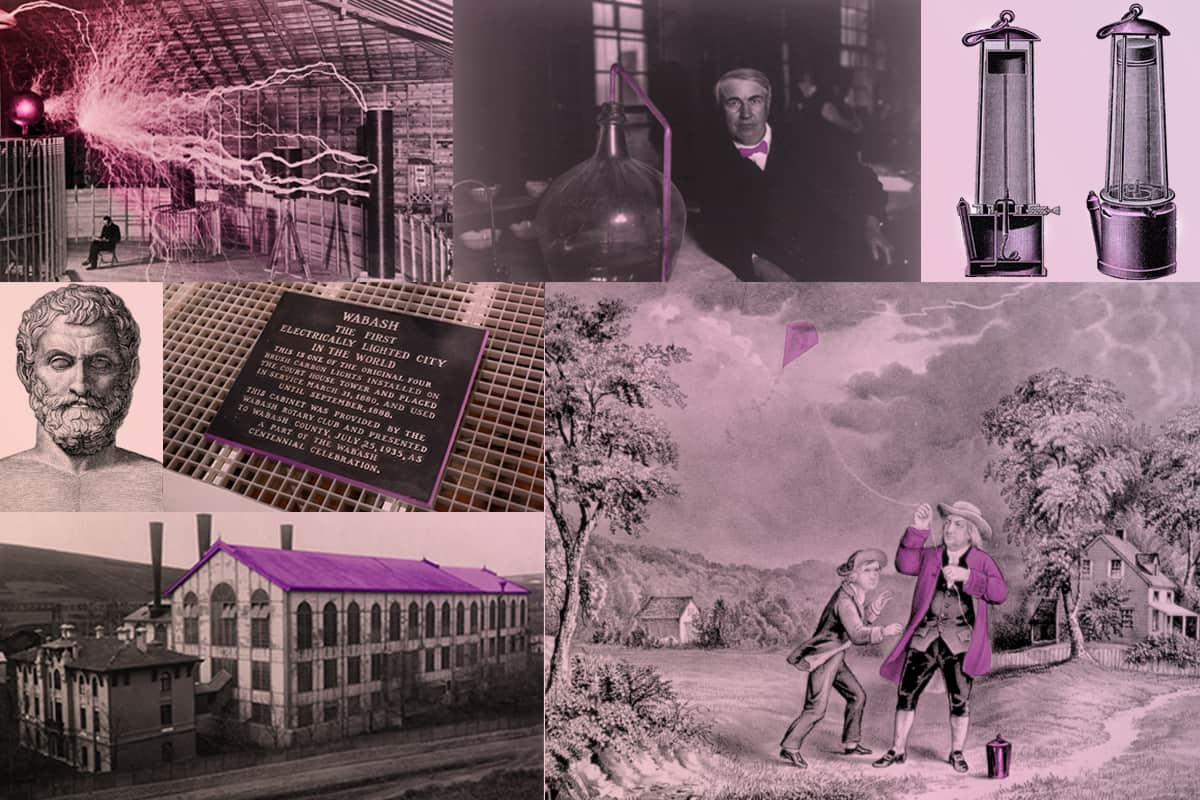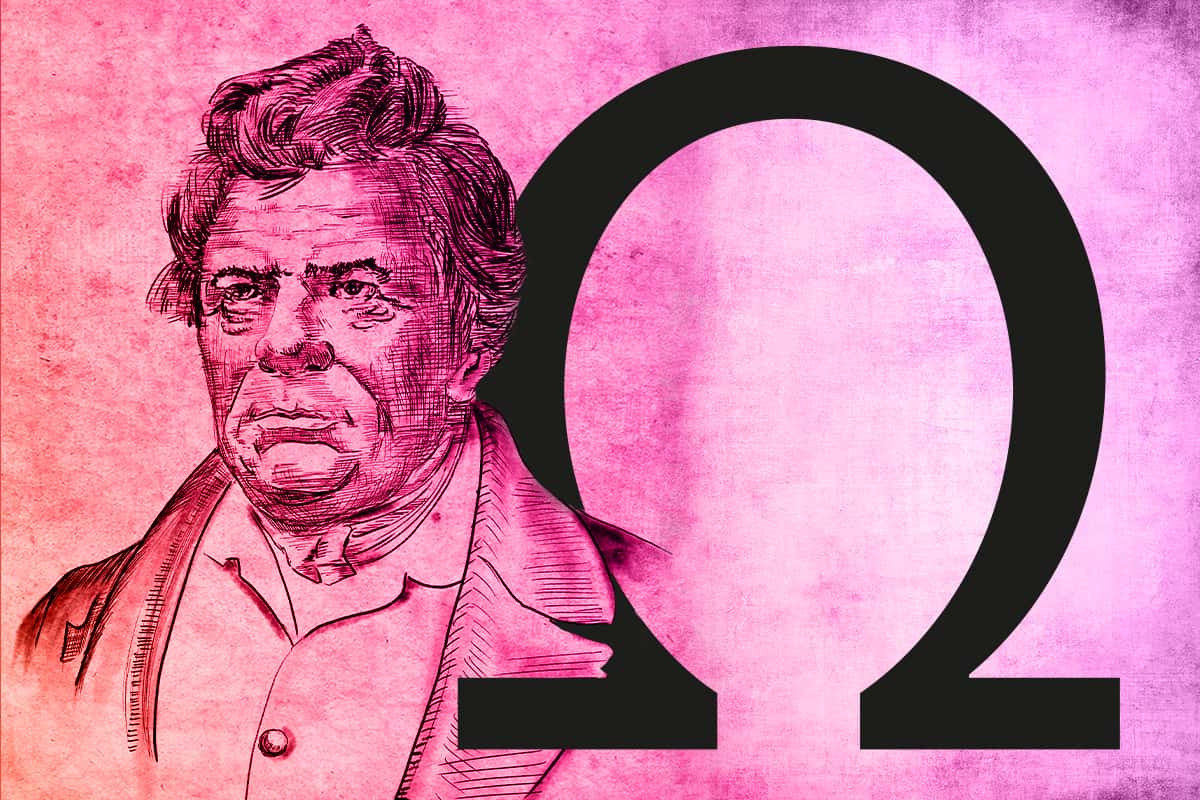
Who is Nikola Tesla? Tesla's Extraordinary Life and Inventions
What is in this article?
Nikola Tesla, one of the most important inventors in history, has been called a genius, and his reputation goes way beyond his work on electricity. For this reason, Tesla's inventions and ideas continue to influence modern technologies today, even though he was an underrated genius in his time.
For more detailed information about Tesla's extraordinary life story and his inventions that shape today's technology, check out our post.
Who is Nikola Tesla?
Nikola Tesla was a trained electrical engineer and inventor. He made many inventions with the goal of changing the world using electricity. In addition to developing alternating current, which is now considered the standard, he worked with alternating current motors. Tesla is recognized as a scientist, physicist, engineer, inventor and philosopher.
The Life of Nikola Tesla
Nikola Tesla was born on July 10, 1856 in the village of Smiljan in Croatia. Tesla's mother, Duka, was an inspiration to Tesla, as she invented small household appliances such as egg whisks to make housework easier. Tesla was influenced by his mother's creative spirit as he developed some of the most important inventions in history, such as AC electricity and the Tesla coil.
He was educated in Austria and Prague. After breaking off contact with his family, he moved to Maribor, Slovenia, where he worked as a technical draftsman. In March 1879, he traveled from Maribor to Gospic under police escort, as he did not have a residence permit.
In 1880, his uncles Petar and Pavle arranged for him to travel to Czechoslovakia to study at the Karl-Ferdinand University in Prague. Although it was too late for him to be admitted to the university, he attended lectures and studies and continued his intensive studies on his own. His goal was to develop the idea of generating electricity by rotating magnetic fields.
In 1881 he traveled to Budapest, where he worked in a telephone exchange and improved some inventions. In February 1882, while walking with a friend in a city park in Budapest, Hungary, reading stanzas from Goethe's Faust as the sun was just beginning to set, the solution to the long-sought rotating magnetic field suddenly occurred to him.
At that moment, he imagined an iron rotor spinning rapidly in a rotating magnetic field generated by the interaction of two different alternating currents. The rotating magnetic field, one of the greatest discoveries of all time, was discovered at this time.
In 1882, he began working for Thomas Edison's new company, the Continental Edison Company in Paris. Here he took on tasks such as installing electric lighting systems, repairing DC dynamos, and maintaining equipment. After quickly discovering ways to improve dynamos, he invented a widely used automatic regulator that is considered an important development.
In 1884, at the age of 28, he decided to move to the United States, where there were more opportunities. He took with him only a few coins, his drawings, poems and a letter from Charles Batchelor, a friend of Edison's who had worked as his supervisor in Europe. This letter reads as follows:
I know two great men. One is you and the other is this young man who stands before you.
While in the U.S., he met Thomas Edison and worked with him for several months. When Edison refused to pay Tesla for his work, he decided to leave the company and continue on his own path as an inventor.

In 1887, he received funding from American entrepreneur George Westinghouse to start a company. He worked on the induction motor to compete with Edison's direct current system.
Tesla's motor distinguished itself during the Industrial Revolution in the 19th century by being more durable, cheaper, and more efficient than its competitors. Tesla's invention was licensed to the Westinghouse Company in 1888.

In 1893, Tesla introduced alternating current by making a statement at the World's Columbian Exposition in Chicago, held in honor of the 400th anniversary of Christopher Columbus' voyage to America.
This exhibition became popular as people, ideas and technologies from around the world came together and contributed to each country's industrial, cultural, commercial and educational initiatives. Westinghouse also felt that this exhibition was his best chance as he wanted to promote his polyphase AC system.
Tesla's announcement was a turning point, as it removed people's doubts about the reliability of alternating current. It showed that alternating current could operate smoothly, and so alternating current became the main standard for power systems.
In 1895, Tesla's laboratory in New York burned down. Much of his work was destroyed, including all notes, designs, patents, and inventions. After the trauma of losing everything, he moved to Colorado Springs. During this time he developed the idea of a wireless communication network. He managed to contact J.P. Morgan, one of the leading financial magnates of the time and set up a laboratory with him in Long Island, New York.
That same year, Tesla succeeded in transmitting radio signals to a point 50 miles away, and he filed a patent for it in 1897. The radio was a significant invention for the time because it allowed communication without wires or cables. Guglielmo Marconi, who was working on radio signals during this time, patented the radio in 1896.
Tesla believed that Marconi had stolen some of the ideas for the worldwide wireless network. This was because Marconi was using the system that Tesla had already used for radio. The following year, Tesla proposed the World Telegraph System, in which he envisioned transmitting stations collecting messages and broadcasting them through individual receivers, but Tesla's radio idea was not considered feasible, and J. P. Morgan, who had supported his laboratory, stopped supporting him. Investors began to favor and fund Marconi because of his earlier success.
Tesla spent the last years of his life in poverty and died on January 7, 1943. Six months after his death, the United States Supreme Court returned the radio patent to John Stone and Oliver Lodge and to Tesla. He is considered a successful inventor who made significant advances in the field of communications and electricity.
What did Nikola Tesla Invent?
 Alternating current was developed by Tesla. Tesla worked for Thomas Edison in Manhattan when he came to the United States. Edison promised to pay if he could make his dynamo prototype efficient, but did not keep that promise.
Alternating current was developed by Tesla. Tesla worked for Thomas Edison in Manhattan when he came to the United States. Edison promised to pay if he could make his dynamo prototype efficient, but did not keep that promise.
Edison's direct current is not as effective as Tesla's alternating current method in transmitting electricity over long distances. When Edison reneged on his offer to pay Tesla, Tesla resigned and moved on to his next work.
He applied for several patents for alternating current, which were later sold to Westinghouse. Since the invention of electricity and Tesla's discovery, AC current has been widely used. It is still used today in the transmission of radio and television signals.
-
Other Inventions of Nikola Tesla
Nikola Tesla holds more than 300 patents, but few of these inventions are known. This means that Tesla's ideas have been tested and failed, are not fully understood or known. His inventions and developments include alternating current, the Tesla coil, neon lamp, induction motor, Tesla turbine, magnifying transmitter and radio-controlled device.

One of Tesla's most well-known works is the Tesla coil. The coil is located in Shoreham, New York, the Tesla Science Center at Wardenclyffe.
Taking advantage of the coil, Tesla began to work on wireless power, which is free of charge and allows information to be transmitted from one tower to another by resonance.
Although the light bulbs he uses are not connected to any power source, the magnifying transmitter transmits electric current to a point 1 km away.
Tesla developed a piston engine to power automobiles because the turbines used at the time were highly inefficient. Tesla's invention moved liquids with the least resistance, resulting in higher efficiency.
 X-rays, on the other hand, transmit radioactive waves through the human body, creating a silhouette of the area of interest. Although X-rays were originally invented by Wilhelm Röntgen, Tesla made improvements that led to clearer images.
X-rays, on the other hand, transmit radioactive waves through the human body, creating a silhouette of the area of interest. Although X-rays were originally invented by Wilhelm Röntgen, Tesla made improvements that led to clearer images.
Using radio signals, Tesla was able to remotely control the engine, accessories and lighting system of a toy boat. Today, drones are based on this technology.
Tesla worked on the neon light technology of the time to create various designs. This lighting system is still used today, especially in workplaces.
Tesla's Alternating Current Works
Tesla, who pioneered the use of alternating current, primarily worked on dynamos and direct current. Since he was against the use of direct current in motors, he supported the use of alternating current. This is because direct current cannot be easily converted to higher or lower voltages.
By finding the magnetic rotating field, it makes the rotor connection unnecessary. There is also no need for a switch.
Thus, by replacing direct current with alternating current, which has low efficiency, he managed to prevent losses that occur as it moves away from the power plant.
Nikola Tesla's Education Career
When Tesla was seven years old, his family moved to Gospić, where he finished grammar school and then graduated from the Real Gymnasium. He then attended the Higher Real Gymnasium in Karlovac and completed the 4-year school in 3 years.
Shortly after graduation, he contracted cholera, which kept him at home for 9 months and forced him to interrupt his education. He then convinced his father to let him enter the Joanneum, a technical college in Graz, Austria.
He started to study electrical engineering at the Austrian Polytechnic School in Graz, one of the four schools that trained engineers in Austria-Hungary, but left before finishing his studies.
He then attended Charles-Ferdinand University in Prague. Due to the early death of his father, he had to leave the university after completing only one semester.
Thomas Edison and Nikola Tesla Rivalry
From the late 1880s onwards, Nikola Tesla and Thomas Edison engaged in a rivalry now known as the battle of the currents. Edison's direct current, which runs continuously in one direction, as in a battery or fuel cell, became the standard in the United States in the early years of electricity, but direct current could not be easily converted to higher or lower voltages.
Current could only be transmitted to places within a short distance of the power station. Tesla believed that alternating current was the solution to this problem. Alternating current can be converted into different voltages relatively easily using a transformer.

In 1884, Tesla moved to New York and started working for Edison. Tesla was one of Edison's great admirers at the time. In 1885, he said that he could improve Edison's inefficient motors and generators.
Edison thought Tesla's ideas were great and offered him $50,000 if he could do it. Although Tesla was successful, he did not receive the bonus offered by Edison for his work. Edison said the bet was a joke and offered only a $10 raise to his $18 weekly salary. Tesla then resigned.
Investors wanted to work with Tesla after that. Although he accepted these offers until he established his own laboratory, he eventually sold the royalties of all his patents to George Westinghouse, an inventor interested in alternating current.
Not wanting to lose the royalties he had earned from direct current patents, Edison launched a campaign to discredit alternating current. He spread information that alternating current was dangerous.
He even went so far as to publicly electrocute stray animals using alternating current to prove this claim. Meanwhile, when a prisoner who was executed in the electric chair died a horrible death, he spread the news that alternating current was used in the chair. After this smear campaign, the execution in the electric chair became popularly known as Westinghouse.
Against these smear campaigns, Tesla and Westinghouse confronted Edison and Edison's company General Electric in the lighting of the Chicago World's Fair in 1893 and won the tender.
General Electric offered to electrify the fair for $554,000 using Edison's direct current, but Edison lost the tender to George Westinghouse, who said he could run the fair for only $399,000 using Tesla's alternating current. The 27 million people who visited the fair also witnessed this victory.

Today, although alternating current is still used as a source of electricity, computers, solar panels and most electric vehicles run on direct current.
3 Common Misconceptions about Nikola Tesla
-
Tesla's Invention of the Radio
In addition to Tesla, Marconi also applied for a patent for the invention of radio. However, a year before the two inventors, in 1895, Russian physicist Alexander Popov developed a working radio receiver.
The reason why radio is thought to have been invented by Tesla is that he demonstrated the first radio-controlled device at an electrical exhibition. The device responds to radio signals and is powered by an internal battery. It is one of the first examples of robotics and radio-controlled systems.
-
Tesla's Invention of the Transformer
The first transformer was developed by the Ganz company in Budapest in the late 1870s. The first modern transformer, which is still used today, was invented in 1885 with the ideas of Gaulard and Gibbs.
-
Tesla's Niagara Falls Hydroelectric Power Plant Becoming the First AC Hydroelectric Power Plant
Alternating current power plants were first developed in Europe between 1878 and 1885. In 1885, Westinghouse hired William Stanley, Oliver Shallenberger, Benjamin Lamme and many others to build AC power systems in North America. Tesla did not join Westinghouse until 1888.
Tesla's Contribution to Today's Technology
Tesla, one of the prominent figures of the electrical revolution, is a visionary who changed human history with his inventions. In addition to his own inventions, there are also inventions that were previously worked on but were developed and made functional by Tesla.
- The alternating current, which laid the foundation of the Industrial Revolution, was developed by Tesla.
- Although he did not invent light, he is the inventor of neon light.
- He has important contributions to the development of X-ray technology.
- He is the inventor of remote control.
- The motor developed by Tesla works only with magnets without fuel.
- He contributed to the creation of robotics.
Nikola Tesla's 6 Sayings That Will Open Your Horizons
Tesla has many inspiring quotes. We have compiled 6 quotes that we think will open your horizons:
I don't care if they steal my idea. I care that they don't have their own.
Our virtues and vices are inseparable, like force and matter. When they are separated, man is no more.
If your hatred could be turned into electricity, it would light up the whole world.
Life is and will remain an unsolvable equation, but it involves some known factors.
If you only knew the splendor of 3, 6 and 9, then you would have the key to the universe.
Invention is the most important product of the creative mind of man. The ultimate goal is the complete domination of the mind over the material world, the harnessing of human nature for human needs.
Awards Received by Nikola Tesla
- In 1894, he received honorary doctorate degrees from Columbia University and Yale University and the Elliot Cresson medal from the Franklin Institute.
- In 1915, an article in the New York Times announced that Edison and Tesla would share the Nobel Prize, but neither received the award. It is said that Tesla did not want to share the prize with Edison.
- In 1917, he received the Edison Medal for his development of multiphase and high-frequency electric currents.
- In 1934, he was awarded the John Scott Medal by the city of Philadelphia.
Which information surprised you the most about Nikola Tesla? We are waiting for your comments. You can share our content on social media to share it with more people.

 Online Services
Online Services Application Inquiry
Application Inquiry Pay Assurance Fee
Pay Assurance Fee Query Installation Number
Query Installation Number Compensation Fee Inquiry
Compensation Fee Inquiry Automatic Payment Order Inquiry
Automatic Payment Order Inquiry Partnership
Partnership






Leave a Comment
Comments (5)
L
Linanur
Fen Bilimleri proje ödevim için yazıları kullandım ama linkinizi kullanmayı ihmal etmedim. Bilgi hırsızı değilim sadece bir kaç başlık ve yazı kullandım. El.erinize sağlık çok güzel olmuş ayrıntılı ve harika bir yazı. HAKKINIZI HELAL EDİN 👋
h
hayal seçilmiş
çok güzeldi çok iyi yararlandım
M
Mukadder Arslantas
Mıdır piraçitlegi açıklamasını yazmadınız.en ilginci odur
N
Nolan
I agree 👍
M
Miray
Ayrıntılı ve bilgilendirici bir yazı. Teşekkürler.